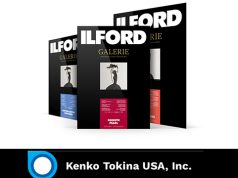
Even by conservative estimates, more than one trillion pictures will be taken in 2019. Some researchers predict numbers as high as 1.7 trillion. This spells good news and practically infinite opportunity for photo retailers, no matter how you slice and dice the data. Or at least it should be good news. The quandary we find ourselves in is that the creation of physical prints, and the associated revenue, has not kept pace with the spike in picture taking. This edition of Manufacturers Roundtable takes this quandary head-on.
Digital Imaging Reporter reached out to six leading industry professionals, company executives who are experts on the subject of printing and print revenue potential. We posed this question to all: How can photo retailers expand print revenue in 2019?
The consensus is that retailers must vigorously pursue two avenues simultaneously. First, they must creatively excavate the mountains of images that exist on smartphones and social media sites with the goal of stimulating interest in printing of any type. Second, merchants must promote a broad range of printing media that attractively extends beyond conventional album prints. Each expert we consulted provided concrete ways to achieve both goals.
Print Press Manufacturers Roundtable: Increasing Print Revenue
Manny Almeida
President, Imaging Division
Fujifilm North America Corporation

“If you are focused on growing your revenue from the traditional 4×6 print, you’re missing the boat, and more important, you’re losing the growth potential afforded by many higher revenue products that are in great demand,” Almeida began. “For many years, we lived in an industry with a great business model, that is, until digitization came along. Now our world is quite different.”
He pointed out that today’s target consumer is far more savvy and fact-based when making purchasing choices. But that doesn’t preclude them from desiring printed images.
“The driving cohorts are millennials and shortly gen Z,” he explained. “They are first and second generation digital natives. They value peer reviews, do their research and make purchases carefully. Some in our industry say that consumers do not want to print anymore. Looking at the success that Fujifilm’s instax lineup has had for the past five years, more than eight million cameras sold in 2017, one has to conclude that digital natives do value the print, maybe just not in the traditional manner.”
The Takeaway
The takeaway: today’s customers still want prints, but perhaps in a different form. They are still hungry, but they resist the same old diner menu—they want some new cuisine.
“The way digital natives shop is also important,” Almeida continued. “When surveyed, they admit to far greater interaction with their phones than with other human beings. They shop online, and they shop on their mobile devices. If your business does not have a web and mobile presence, you’re missing this critical cohort.”
So which rabbit should retailers chase? Almeida suggested ways to expand printing sales.
“Today, 93% of the market takes pictures,” he stated. “About 68% make prints and roughly 48% order gift/décor products. The growth segments are wall décor, personalized products like pet supplies and, of course, books. The good news is the average print order is less than $10 while wall décor averages over $50 per transaction. We’re likely to see fewer transactions but bigger dollars per transaction, helping to fuel retail success.”
James Chan
Director, Marketing
Mitsubishi Electric Corporation

“For retailers to grow their print revenue,” Chan told us, “the key is to tap into the billions of photos residing in mobile devices. They should work with printer manufacturers and have innovative yet easy ways for consumers to print directly and wirelessly from mobile devices like smartphones or tablets.”
Mitsubishi Electric markets wireless smartphone printers targeted toward the event market. Their printing systems are popular with wedding photographers. Wedding guests use a smartphone to create on-the-spot prints wirelessly via Mitsubishi printers.
“The system sets up like a peer-to-peer network and pushes an app to the phone or tablet,” Chan explained. “Users can print from the app, even layering on fun stamps or captions if they like.
“Surprising to me,” he revealed, “many young kids don’t know they can print photos. Creating a print becomes a novel experience. Clearly, today’s children are tomorrow’s shoppers. Retailers must let kids know about printing possibilities via marketing. Retailers could tie up with photo apps already out there.”
One solution he proposed is retailers could rent a simple-to-use dye-sub printer to a family for an event—like a family reunion or birthday party—and sell them the media. Mitsubishi’s K60 model, priced less than $500, is suitable for the home market. Single prints cost between 26¢ and 31¢ per print.
Regardless of what brand or type of printing hardware is rented, Chan cautioned that the wireless connection must be fast. Moreover, printing must be as easy as opening an app and tapping on as few buttons as possible to arrive at the photo selection screen. Equally important, to appeal to folks who post on social media, “…the print output has to have the ability to reflect all the fun of posted photos if users want to do so.”
Glen Hart
Vice President, Imaging Sales
Noritsu America Corporation

“As an industry veteran, I’ve seen many changes,” said Hart. “One of the most alarming is the decline of photo printing in the last 10 years. In spite of this, photos continue to remain one of the most cherished things people possess. Photos are something that people miss the most when they’re gone.”
These are some of the reasons Hart is involved with the Imaging Alliance, serving on the Print Committee. “With vendors and retailers working together,” he continued, “we can do a better job of reminding consumers of the value of holding a cherished memory in their hand, in the form of a printed photo, which they can share with family and friends. If done in a compelling way, it will help consumers get the images that matter the most to them off of their devices or the cloud and converted to a print, enlargement, photo book, metallic print, canvas print or a tremendous selection of photo gifts that consumers are now offered.”
Hart mentioned several opportunities our industry can tie into beyond special occasions, vacations and holidays. For example, May is National Photo Month; June is Family Pictures Month; September is Save Your Photos Month; October is Family History Month.
“In today’s world,” he continued, “the consumer is in control of their images. It’s not that they don’t want to print photos. It is incumbent upon us to do better at making it compelling, fun and easy. Noritsu has various free apps that allow retailers to promote printing from consumers’ mobile devices. These apps help consumers find local businesses that participate in the program. There is no cost to the retailer to sign up, use and promote these apps. They are designed to help drive new customers to their business.”
Rich Mast
Vice President, Sales and Marketing
Pakor, Inc.

“Focus on up-selling, doing things differently and finding your niche,” Mast summarized. “Retailers, many of them anyway, must change their business model. The 4×6 no longer exists as a profitable market. We can supply products for retailers who approach their business as B2C, but we want to help dealers diversify and expand business into B2B,” he said.
Mast recommends that photo dealers go after the B2B market partly because the B2C segment offers margins that are too low. In B2B, end consumers are looking for quality. To cash in on this different appetite, dealers should position themselves as a gallery instead of a showroom or lab.
How does Pakor help retailers achieve this shift?
“To begin with, as a manufacturer we now look in the mirror more. Now we’re doing more educating instead of just shipping boxes,” he explained. “We sell expertise. We have some reps with more than 30 years’ experience. We’re experts and we concentrate on transferring our accumulated knowledge to our retailers.”
In addition to expanding into the commercial B2B realm, Mast encourages dealers to find their niche. “For example,” he said, “we’re a leading supplier of passport systems. Why let your customers go to the post office? We can provide a $1,500 system for passport photos. But more important, we show how to create a Google ad for international passports. There are 660 colleges in the U.S. that offer study-aboard programs. This is obviously a built-in market for passport photos, but it’s largely untapped.”
In terms of up-selling, Mast pointed out that Pakor offers a variety of printable items, including buttons, magnets and so forth that are popular and provide more profit for the retailer.
Pawan Moradia
Chief Executive Officer
Unibind (Peleman Industries)

“We have developed several binding and personalization solutions that are fast and easy for store employees to produce high-quality products,” Moradia said. “Store employees creating awareness of the products, displaying samples, assisting with kiosks and explaining the products to the customers, all of these are crucial to successfully increasing store revenue.”
Peleman Industries, better known to photo retailers as Unibind, is a leading worldwide manufacturer of photofinishing solutions. Moradia told us there are three key areas that are important to every photo retailer. He offered the following ways for dealers to grow print revenue.
First, improve the products they currently sell. For instance, Unibind developed a first-of-its kind patented technology called V paper that changes the way photo books are made and sold at the store. It is the easiest and most consistent way for producing high-quality, lay-flat photo books. Books that lay completely flat have an appeal that is easy to demonstrate to consumers.
“We also developed a canvas solution that is extremely easy to assemble with consistent, high-quality results,” he elaborated. “It’s agile, simple and straightforward. Simplification is our key focus, which in turn benefits retailers.”
Second, dealers must strive to create a better customer experience. An in-store, same-day photo gift product is a very different concept compared to a typical shelf product. Savvy retailers are offering a complete in-store experience of creating personal and emotional photo gifts on the spot.
Third, retailers should cash in on the trend that began with photo books and offer a wider range of printables, including magnets, calendars, panels and also picture hangers in fresh designs, unique materials and different styles. Retailers can use store signage and display samples to engage customers and encourage employees to help customers use self-service kiosks.
Suzanne Seagle
Director, Marketing
DNP Imagingcomm America Corporation

“The key for retailers is finding diversification in providing value-added products,” Seagle said. “When I was a young mother I had a drawer full of prints—two of every shot. But people today use their phone instead of a camera and store their images on the cloud. We want photos to be taken and printed, not just stored or shared. But what will drive people?
“Personalization is the answer,” she asserted. “Provide a personal experience, a value-added experience.”
Seagle suggested three ways retailers could add value to every sale. First is direct personalization: imprinting a personalized message on the product. Her second suggestion is to promote printing on luxury media. Printing on metal as well as printing on wood increase appeal. Products like metallic and silver pearl media also enhance attraction. The third idea is to market panoramic prints using insightful display examples, like a print wide enough to include all of the bridesmaids or every member of a soccer team.
“For retailers,” she explained, “personalization means higher revenue per sale, a higher ring on the register. Furthermore, the retailer has a great shot at a second sale, an aftermarket sale like a custom frame that accommodates a wide panoramic print.”
In addition to providing the raw materials, DNP helps retailers creatively drive print revenue by providing POP materials, collateral in the form of graphics, storylines, advertising copy and so forth.





